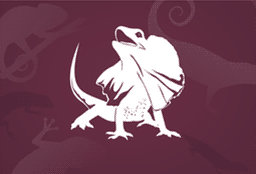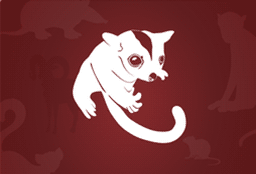Black and white, with the pattern varying across its range. The back of its neck, upper tail and shoulders (on its wings) are white in males and grey in females, and (across most of Australia) the rest of its body is black. In south-eastern, central and south-western Australia, including Tasmania, its back and rump are entirely white. Its eye is red-brown. Young birds are usually grey rather than black and have dark eyes.
Distinctive feature
One toe faces backwards and three face forwards. It has a square-tipped tail.
The caterpillar (larva) is initially pale yellow with fine hairs, before turning green. It has narrow yellow lines on its body which are sometimes hard to see. The upper side of the butterfly (adult) is white with a black tip on its forewing (front wing) and a black patch on the front edge of its hindwing. A male has one black spot on its forewing, while a female has two black spots. Looking from underneath, the forewing is white with two black spots and the hindwing is yellow.
Size
Caterpillar about 3.5 cm; Butterfly up to 5 cm wingspan.
Dark slate-grey on its head, back and wings, and pale orange-brown below; its undertail is boldly barred black and white. Its legs and feet are dull yellow and its bill is black. Young birds are duller and browner, with mottled markings, especially on their breast and underparts.
Distinctive feature
A yellow eye-ring which is tinged green in young birds.
Its head and upperparts are mostly dark grey, with a white eyebrow and throat, a narrow grey band across the upper breast and a creamy-buff belly. The feathers of its long tail have white edges and tips, and the tail is often fanned out.
Size
14 – 16 cm long
Deciduous tree, growing to 15 – 30 m high and 15 – 20 m wide. Some of its grey-brown bark peels off to reveal a creamy white inner bark, giving the trunk a mottled appearance.
Leaves
Mid-to-dark green with 3 – 5 lobes and slightly serrated edges. They are 10 – 25 cm across and turn yellow-brown in autumn. The leaf lobes are about as wide as they are long.
Flowers
Red or yellow, in small rounded clusters. The red (female) flowers grow from the newer shoots and the yellow (male) flowers grow from older branches further back toward the trunk.
A black and white bird, the pattern varies slightly between sexes. The male has a white eyebrow above a black horizontal eye-stripe, a black face and throat, while the female has a white face and throat, with a broad vertical stripe through the eye, and no white eyebrow. Both sexes have a thin white bill and black legs and feet. Juvenile Magpie-larks have a black forehead, white eyebrow and a white throat.
The motorbike frog is a ground-dwelling tree frog found in Southwest Australia. It gets its name from the male frog's mating call, which sounds like a motorbike riding past and changing gears. Other common names are Moore's frog, the western bell frog, western green and golden bell frog, and western green tree frog.
Back is green with gold mottling (after basking in sunlight). Can be almost dark brown in colder conditions. The underside usually ranges from very pale green to light brown.
Tadpoles
Large translucent yellow with darker areas. As they develop they become darker with deep fins and a pointed tail tip.
The genus name Hardenbergia is named after Franziska Countess von Hardenberg and the species name comptoniana after Mary, 1st Marchioness of Northampton whose husband was Charles Compton.
Twining shrub or climber. Its size varies depending on supporting plants or structures it is growing on.
Leaves
Usually crowded, 3 and sometimes rarely 5 foliate. Leaflets are 4 – 6 cm long., and do not spread very widely. Size approximately 2–4 mm long and 1 mm wide, thick, concavo-convex (concave on both sides) and pointed at ends.
Flowers
Blue to purple and in some cases white. Typical pea shape consisting of 5 petals: the "standard", the "keel" (2 fused petals) and two "wings". Flowers are in an often drooping, elongate cluster.
The Oblong turtle (Chelodina oblonga) occurs in Northern WA and the Northern Territory. This species is also known as Southwestern snaked-neck turtle (Chelodina colliei) in southwest Western Australia.
The original specimen collected and given the name Chelodina oblonga is now thought to be from a species of long necked turtle found in northern WA and the Northern Territory, the Northern Long-necked turtle (Macrochelodina rugosa). The first specimen of the oblong turtle seen in southwest WA was originally classified as Chelodina colliei.
The carapace (upper shell) ranges in color from light brown to black. The olive to gray neck is thick, with blunt rounded tubercles. The head is large and flat with a protruding snout and an unnotched upper jaw.
Size
Adult Shell 30 - 40 cm long.
A colourful bird, the upper part of its back is bright green, merging to light blue on the lower part to its rump. Its tail is black, tinged with blue, and has two long central feathers (called streamers) that extend beyond the tip of the tail. Its forehead is blue-green and the top of its head is golden. A bold black eye-stripe runs from the base of its beak and is bordered below by a narrow blue line. Its chin is yellow, changing to chestnut on its throat, below which is a broad black band. It has a green breast, becoming paler on the belly and changing to light blue from the lower belly to the vent. It has a long, slim, curved black beak and its legs and feet are grey-black.
Young birds are generally duller and greener. They lack the black band across the lower throat and the long tail streamers.
Distinctive feature
The sexes differ in the length of their tail streamers: the male has longer, more slender streamers.
The male is unmistakable in full breeding varying from cobalt-blue in the east of its range to violet-blue in the west with a pale blue head. Wings and long tail are brown with a blue wash. In non-breeding plumage, called eclipse, he is very similar to the female, being pale brown above and white underneath although he retains the blue wash on wings and tail. The young look like the females.
Distinctive feature
The magnificent blue colour of the male.
Size
14 cm
Metallic blue-black on top and light to dark grey on its breast and belly. Its forehead, throat and upper breast are rust in colour. It has grey legs and feet, and its eyes and bill are black. A young Welcome Swallow has shorter tail feathers than an adult and its forehead and throat are a creamy beige (instead of rust).
Distinctive feature
A deeply forked tail with a white band or row of spots on the long tail feathers.
The motorbike frog is a ground-dwelling tree frog found in Southwest Australia. It gets its name from the male frog's mating call, which sounds like a motorbike riding past and changing gears. Other common names are Moore's frog, the western bell frog, western green and golden bell frog, and western green tree frog.
Back varies from pale brown to dark chocolate with areas of deep green or olive, red colouration in the groin and hind limbs.
Tadpoles
Large, black with deep tail fins.
It has dark brown to black fur with a bright white-stripe at the junction of the body and wings. Some individuals also have an area of white-fur on the chest.
One of the largest insectivorous (microbats) in Australia, it is in the ‘free tail’ family (Molossidae) which have a strong, stiff tail projecting beyond the tail membrane.
The species was formerly classified as Tadarida australis.
Size
85 - 100 mm head and body length; free tail extends 40 to 55 mm from the body. Adult average weight 37 g.
One of Australia's most widespread birds on mainland.Mostly black with a white belly and eyebrow. A young bird has paler, slightly rusty edges to its wing feathers.
Size
18 - 22 cm long (from head to tail)






